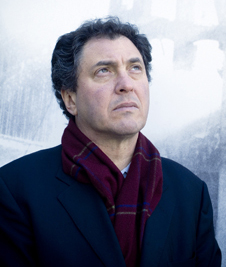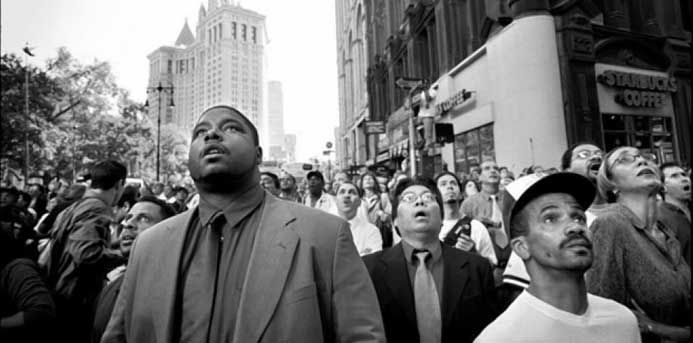Highland Park native David Friend always wanted to write a book about the role of photography in a given week, but he never anticipated an event as horrific as 9/11.
It was the most widely viewed breaking-news event in human history, experienced on TV alone by an estimated 2 billion people—a third of the human race.
Friend, editor of creative development at Vanity Fair and former director of photography at Life, explored the many ways 9/11 was captured on film in his book, “Watching the World Change: The Stories Behind the Images of 9/11,” which was re-released in paperback this year with a new preface. He also won Emmy and Peabody Awards for his role as executive producer for the CBS documentary “9/11” with Robert DeNiro, an expanded version of which will air on Sunday, September 11 at 7 p.m.
Make It Better’s Senior Editor talked to Friend about 9/11, a decade later.
When we talk about an event like 9/11, why is photography so important?
 When certain events happen—whether it be the freedom movement in the Arab world this past year, wartime, the tsunami—there is an unmatched power in imagery, as opposed to verbal documentation. The image can speak to people directly, across cultures, across age groups. There’s something in the commonality of photography that allows everyone to have a reaction.
When certain events happen—whether it be the freedom movement in the Arab world this past year, wartime, the tsunami—there is an unmatched power in imagery, as opposed to verbal documentation. The image can speak to people directly, across cultures, across age groups. There’s something in the commonality of photography that allows everyone to have a reaction.
We had three technologies in the 1990s that by 2001 allowed us to see the event as it occurred: simultaneous broadcasting, so you had 24/7 television; digital photography, that allowed an image to be taken, transmitted and then seen very quickly; and the Internet. So, my book is about the need for people to see a political act that has global repercussions, the need for people to see something that’s unimaginably violent, and the coming of age of technology that allowed you to see all this.
What are some of the images from 9/11 that you found most fascinating?
Wolfgang Staehle, an artist, had a remote camera that was putting up images over the Internet, every four seconds, of the New York City skyline from Brooklyn, as part of an art project. So he captured the whole sequence of events. He has been good at not exploiting the images, so they’re not widely known.
A part of the book that became quite controversial was a picture by Thomas Hoepker, which I was the first in America to publish. It’s a group of people in Brooklyn sitting and talking about the event, while it unfolded behind them. At the time, Thomas perceived the photo as sort of insensitive; it invited critical responses. Even though the people in the picture are dressed in bright colors and seem to be relaxing, they were quite distressed. You bring your own set of assumptions, preconditions and prejudices to a picture, so it isn’t just the content.
How has your thinking about 9/11 changed, now that it’s 10 years later?
The attacks would have been different had they occurred today. We would have people communicating about it in real time, with all the new technology we have now—YouTube, Facebook, Twitter. We’re connecting with one another in ways that we couldn’t have even imagined then, and that have important political implications. Most importantly, we have still and video cameras embedded in our cell phones, so many, many people are walking around with cameras attached to them.
If it happened today, people in the towers might have taken pictures of what was happening inside and sent them out to their loved ones. You would have a witnessing that was individualized, which would have been even more unbearable, for better or for worse.
An excerpt from “Watching the World Change” can be found here, and a slideshow of rare photos from 9/11 is here.
Book cover photo by Kelly Price/Polaris; Author photo by Frank Ward

